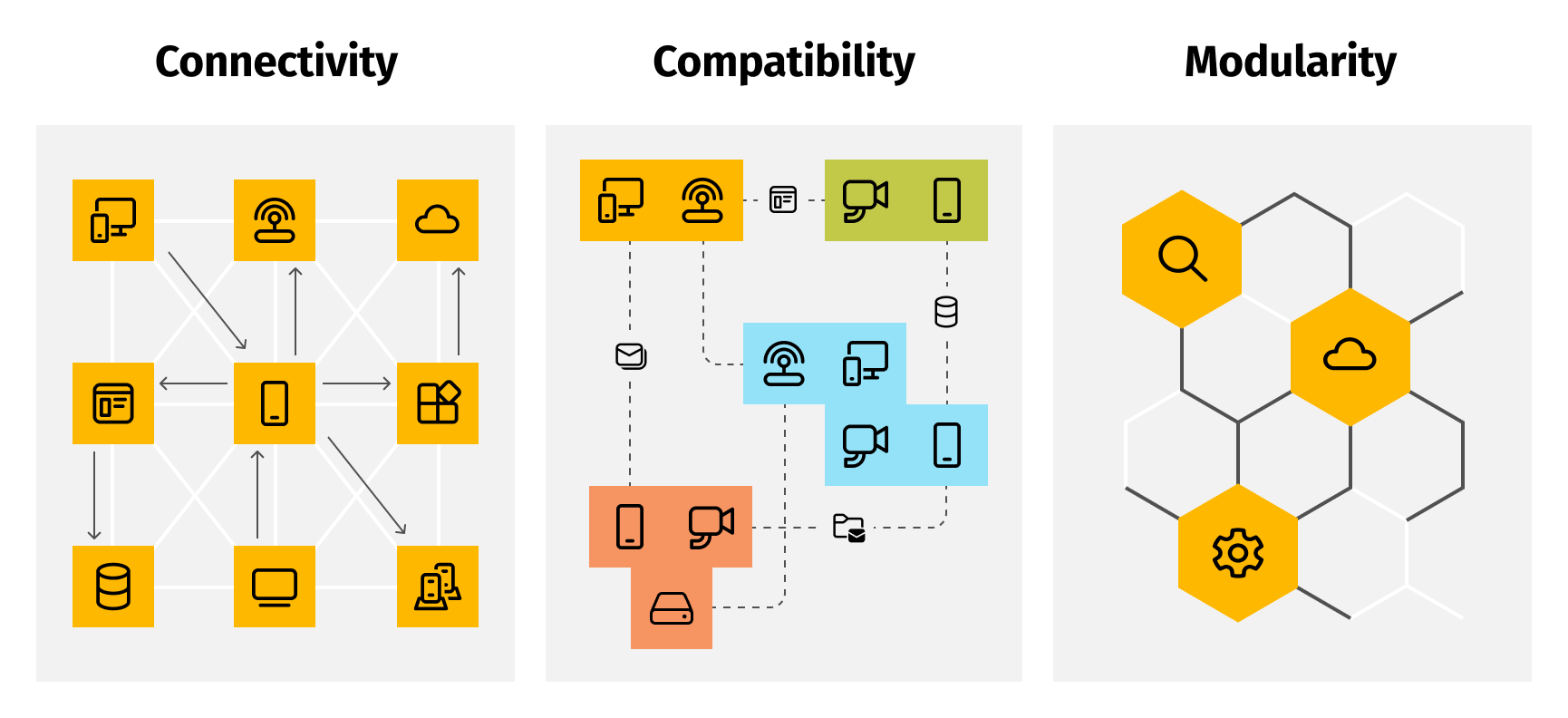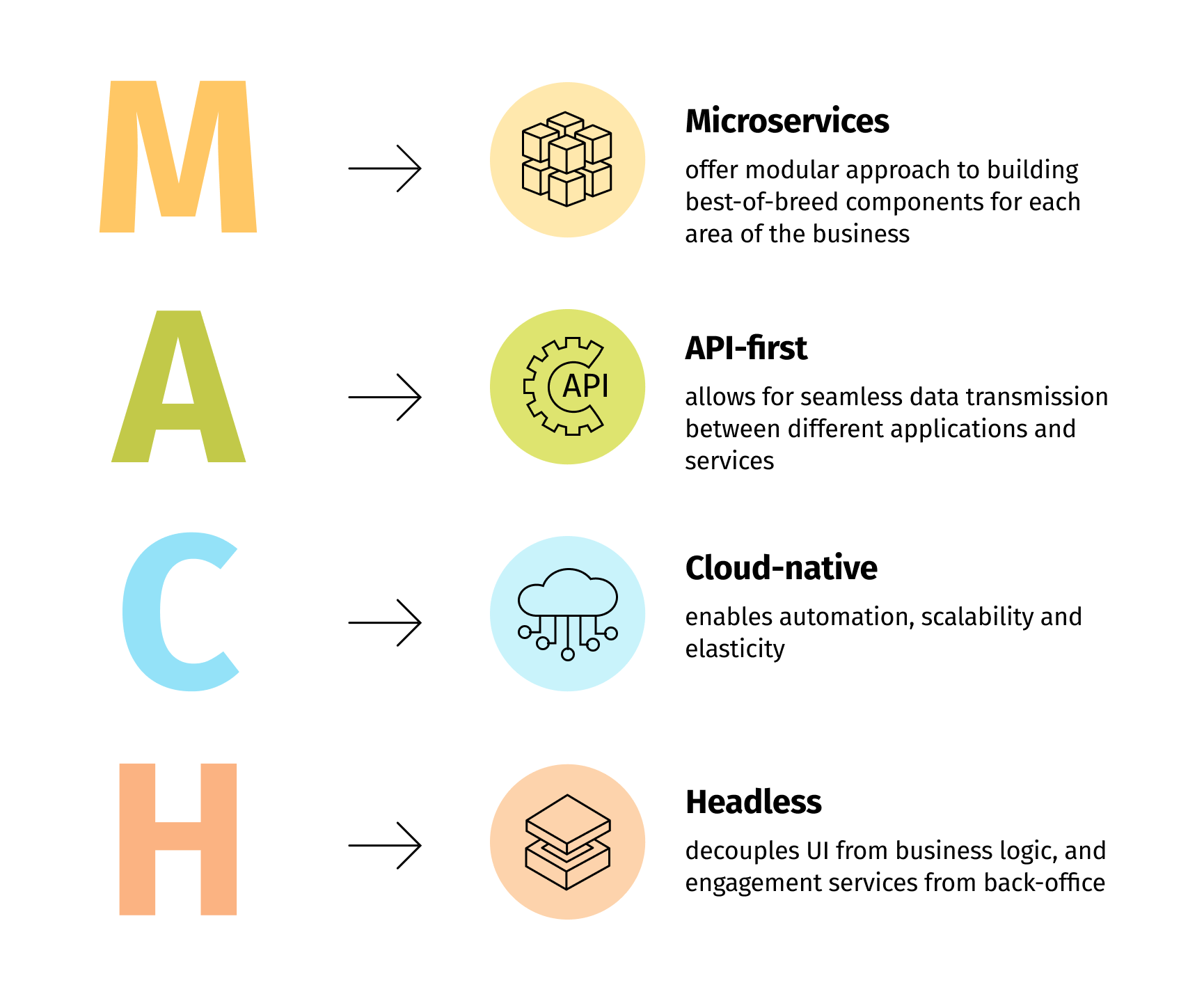
2023 trends: Flexibility is the new norm for technology infrastructure
With Industry 4.0 on our doorstep, the business landscape presents a completely new set of challenges and possibilities. To achieve the flexibility required to navigate this new environment, companies need to add extra storage, new applications, advanced networking technologies, better hardware, and more computing power.
Digital transformation and accelerated growth create a load not only on the technical architecture of the infrastructure but personnel-based resources as well. This includes skills, competencies, and experiences required to manage the IT capabilities within the organization, as well as a profound understanding of business and technology processes.
Modern, scalable, and agile infrastructure is an important driver for growth. It should be able to handle rapid changes in the outside environment, adapt to different workloads, resolve a variety of tasks, and easily transform to satisfy business demands. Together these capabilities represent information technology infrastructure flexibility (ITIF).
Capturing flexibility with IT infrastructure
IT infrastructure is often defined as a combination of the technology base and the human factor. Thus, achieving ITIF requires a two-pronged approach, addressing both of these components:
Technical IT infrastructure
The tech component of IT infrastructure is an aggregation of software, applications, and functional programs coupled with the company’s physical assets, such as servers, machines, access points, routers, and switches. These elements work collectively to monitor, control, and support business processes to streamline the pace and overall efficiency of operations. On this level, flexibility manifests through connectivity, compatibility, and modularity of the integral parts of the information system.

- Connectivity refers to the ability of tech components to communicate with other elements both inside and outside the organization to enable coordination between units, departments, and branches, as well as collaboration with customers, suppliers, and vendors. ITIF offers a better connection between parties involved through high-speed telecommunication lines, FTP servers, APIs, and web services. This facilitates the ability to retrieve, add, or modify data in intra- and inter-organizational environments, providing secure access to IT resources regardless of the user's location.
- Compatibility enables the components of different information systems (IS) to interoperate. In any business setting, every functional unit within the same organization can use its own version of IS. At the level of partner and supplier network, things get even more complicated, since there are a variety of different IS. Infrastructure flexibility allows the alignment of these systems offering seamless coordination through the existing integration points. This way ITIF helps to consolidate various types of information coming from several sources.
- Modularity provides the ability to easily reconfigure any software, hardware, or data component with no disruptions in the functioning of the IT infrastructure. Since all the modules can be deployed and evolved independently, enterprises can create unique combinations of best-of-breed applications, ensuring the system can meet both their current and future needs.
Human IT infrastructure
The human factor of IT infrastructure is defined as skilled personnel, who have knowledge, expertise and capabilities to manage, plan and make decisions about IT in their organization. This includes all the professionals responsible for the development, deployment, maintenance, and support of IS – from C-level executives, like the Chief Information Officer (CIO) or Head of the IT Department, to architects, engineers, and project managers.
Adhering to the principles of flexibility, IT personnel must be eager to adapt to any new technology, understand it quickly, and then take new knowledge back to their work. Since hardware and software are constantly evolving, it calls for IT specialists to continuously update their skills to retain their ability to make all the required changes, modifications or upgrades needed to future-proof the information system.
Implementing a flexible IT environment in the cloud
To truly deliver state-of-the-art tech capabilities anywhere and at any time, enterprises must shift from traditional on-premise data processing solutions to cloud-based applications. Harnessing the power of cloud computing and internet technologies, cloud-native platforms (CNP) provide organizations of all sizes with scalable and elastic IT capabilities, reshaping the value proposition of business applications and delivering faster time-to-market at a lower cost.
Due to the considerable significance of cloud enablement, Gartner predicts that CNP will form the basis for more than 95% of new IT initiatives by 2025 – up from less than 40% in 2021. To truly embark on that value-generating digital transformation journey, enterprises have to embrace cloud-enabled technology solutions, such as MACH architecture, composable commerce, and as-a-service (XaaS) consumption models.MACH architecture
MACH (Microservices, API, Cloud, Headless) offers a modular “swappable” architecture that helps ensure that companies can best manage customer demands and changing business requirements in today’s uncertain environment. It allows for the iterative introduction of autonomous interconnected business capabilities (microservices), empowering enterprises to gradually build out their optimal technology infrastructure.
The headless approach separates the UI from backend business logic, thus enabling the CNP to store content and data in a way that’s not tied to any particular front end. The communication between the system components happens through APIs, allowing for ultimate flexibility, agile delivery, and differentiation in customer experience.

Composable commerce
Composable commerce enables businesses to select and experiment with best-in-class components from different third-party vendors and weave them together into a unique stack of features serving specific business goals. With a host of such cloud-native solutions, known as packaged business capabilities (PBCs), enterprises can create an open technology ecosystem that encourages seamless integration and customization, along with continuous delivery, quality automation, and agility. This results in an 80% boost in the speed of new feature implementation compared to competitors using legacy technology platforms.XaaS
As-a-service business model exempts organizations from owning infrastructure to make their products. Instead, they can purchase virtualized hardware and resources such as servers, networks, storage, or digital machines. Infrastructure is therefore delivered to them as an experience rather than an aggregation of physical assets.
The benefits of XaaS drive increasing interest in various cloud-based deployment models. In terms of infrastructure, the most popular services are infrastructure-as-a-service (IaaS) and platform-as-a-service (PaaS).
- IaaS. Infrastructure-as-a-service allows businesses to define their information system requirements in line with changes in workload and demand dynamics, promptly ramping infrastructure capacity up or down. This allows enterprises to achieve significant cost-savings, not only due to zero upfront investments, but also because the billing model for IaaS is based on usage, performance, or output.
- PaaS. This cloud-based delivery model is a highly automated service type that provides a complete, flexible, and cost-effective environment – hardware, software, and infrastructure – for developing, running, and managing applications. In 2021, around one-third of tech-enabled organizations were using a PaaS model. Last year the number rose to around 40% to 45% and will grow from there.
Modern technology infrastructure: Designing for the unknown
Modern organizations are mostly tech-enabled, meaning their business functions can not be effectively executed without IT capabilities. Technology flexibility provides the means for enterprises to quickly respond to requests from functional lines of business as well as environmental changes, whether they come from operations, clients, partners, or suppliers.
ITIF contributes to a company's agility not only by transforming its information system to deliver more flexible solutions but also by supporting the dynamic formation of organization-wide value networks. However, designing those capabilities poses another challenge: what the business will need of IT in the coming years. While predicting the actual data governance, workload, and physical or human-based infrastructure requirements is next to impossible, you can anticipate your company’s future demands by focusing on the desired business outcomes:
Ensuring faster and highly available IT services
To satisfy the continuously changing and growing range of requirements, infrastructure delivery teams need to act quickly and efficiently. However, it often happens that the business is stuck with outdated, vintage applications that have already reached a critical juncture, where they can hardly take any more add-ons, modifications, or patches.
Design and deployment of new solutions take significant time and effort but ITIF helps to streamline this process by enabling continuous integration and delivery. This leads to 80% faster execution of changes to a system, a 10x speed-to-market boost, and enormous cost savings of up to $103K per hour due to reduced application downtime.Driving innovation with flexible technologies

New innovative technologies are appearing every week. And while their number and variety can be overwhelming, they offer great opportunities to make the work more productive and efficient.
Whereas traditional on-premises data-processing units require cumbersome forklift upgrades every few years, modern IT systems allow you to modernize your infrastructure with the latest tech advancements as soon as they become available.
Drawing on innovations like IoT, AI, mobile apps, cloud, and XaaS you can create a complex network with multiple access points, servers, software components and computing devices. Thanks to the modular nature of its constituent parts you can effortlessly make necessary changes or modifications. This eases progress and helps you achieve your business goals faster.
Improving workplace agility
IT infrastructure is not just the technology components but also the people behind it. They are the ones who ensure that the company can quickly respond to unexpected changes in product design, market conditions, or the organization itself. Thus, creating an environment where tech talent can be stimulated and challenged in their everyday work, and catering to their needs should be one of the priorities for enterprises that have embarked on infrastructure flexibility.
The pandemic was the major catalyst prompting businesses to reconsider their approach to workforce agility. While the lockdown helped to demystify the work-from-home model, it also highlighted the need for workspace modification. In the post-pandemic world, the majority of professionals engaged in digital and technology sectors would prefer to work remotely on average 3.3 days a week. This means the infrastructure has to be flexible enough not only to accommodate home networking but also to provide secure access to corporate applications.To facilitate the efficient functioning of the distributed enterprise, and support the usage of multi- and hybrid-cloud solutions, many companies are now turning to SD-WAN technology. It leverages different network types, such as MPLS, broadband and wireless, offering centralized management and full network visibility. It also operates in a zero-trust mode, offering a secure virtual workspace for individual users working from dispersed geographical locations.
Importance of technology flexibility
The modern business landscape continues to grow and evolve at an increasingly rapid rate. In such a setting, IT infrastructure is no longer a mere combination of physical assets, software and human components, but a powerful new competitive weapon. The businesses that fail to recognize its importance today are doomed to be left behind by the next generation of enterprises that see the value in smart IT systems.
The companies staying ahead of the curve are already spending over 58% of their IT budget on flexible IT infrastructure, which helps them to embrace the latest technological advancements, tackle unplanned system requirements, and accelerate development cycles. Moreover, with flexible technology solutions, you can accelerate your digital transformation journey, future-proof your business and develop a sustained competitive advantage. Contact us to find out how to do that!
